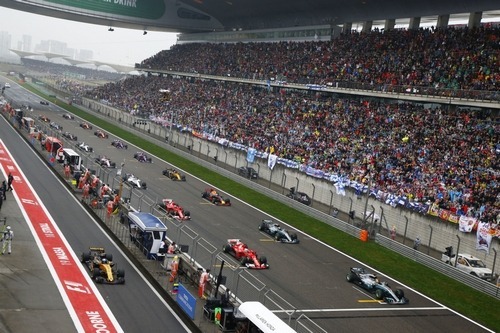
Judging by the start of the Chinese Grand Prix, Sebastian Vettel would not be able to pass a parking test, having been a good half a car’s width outside of his front row grid position. The incident was investigated by the race stewards, but they didn’t take any action on the issue, although the fans have mixed opinions.

Judging by broadcast footage and various camera angles of the race start, Vettel appeared to be close to a meter outside of his grid position, with his car sitting too far to the left side of the position. Article 36.9 of the FIA Formula One Sporting Regulations specifies that a driver must stop “within” their grid position, but the regulations don’t specifically say how far out of the grid spot is too far:
“When the cars come back to the grid at the end of the formation lap (or laps, see Article 39.16), they will stop within their respective grid positions, keeping their engines running.”
Unfortunately, there have been no similar issues to this one in the past few seasons, so there are no other cases to use for comparison. It’s important to specify that Vettel’s front tyres were in line with the yellow line that dictates when a driver is too far forward or too far behind the grid position. Instead, he was too far to the left, which could have allowed him to block the Mercedes cars on the outside grid positions.
The start was clean enough that the stewards felt no penalty was required for the issue, although it probably would have turned out differently for any team other than Mercedes or Ferrari. This decision was likely to prevent imposing a penalty that would ruin Vettel’s race and the World Drivers’ Championship battle, since no clear advantage was gained from Vettel’s peculiar starting position.
Stroll And Pérez Disagree About Collision
Weekend Summary: 2017 Chinese GP
The views and opinions expressed in this article are solely those of the author and do not necessarily reflect the official policy or position of any other agency, organization, employer or company. Assumptions made in any analysis contained within this article are not reflective of the position of any entity other than the author.